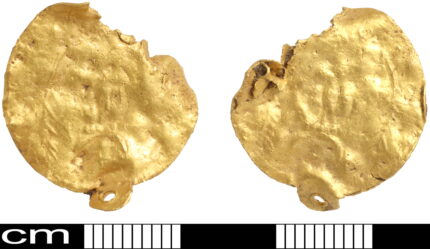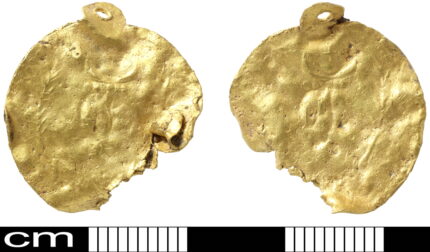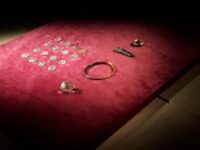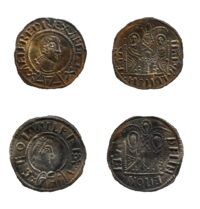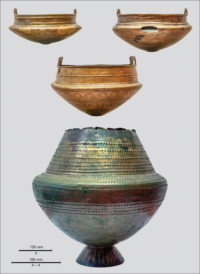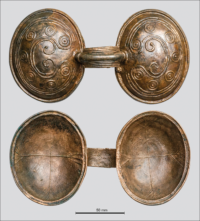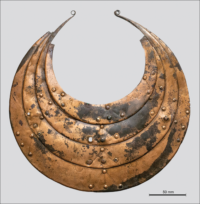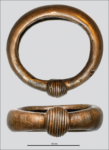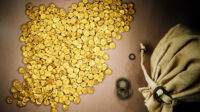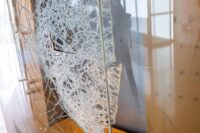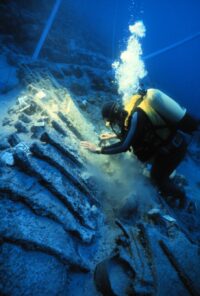 Metallurgical analysis of tin ingots found on a fabulously wealthy Late Bronze Age (ca. 1320 B.C.) shipwreck found off the coast of Uluburun, Turkey, has revealed that a full third of the tin was sourced from a remote shepherding region in Uzbekistan, more than 2,000 miles away from Haifa where the ship set sail. That means small pastoralist communities in the Central Asian highlands also ran local mining operations that connected to vast international trade networks linking Bronze Age Europe, Africa and the Near East.
Metallurgical analysis of tin ingots found on a fabulously wealthy Late Bronze Age (ca. 1320 B.C.) shipwreck found off the coast of Uluburun, Turkey, has revealed that a full third of the tin was sourced from a remote shepherding region in Uzbekistan, more than 2,000 miles away from Haifa where the ship set sail. That means small pastoralist communities in the Central Asian highlands also ran local mining operations that connected to vast international trade networks linking Bronze Age Europe, Africa and the Near East.
 The shipwreck was discovered in 1982 by a sponge diver plying his trade in the Mediterranean waters off Uluburun. He spotted oxhide ingots (rectangular in shape with four handles in the corner that give them the appearance of a hide) and reported them as “metal biscuits with ears,” a description as charming as it is accurate. Institute of Nautical Archaeology divers confirmed the find and dated the wreck to the Late Bronze Age.
The shipwreck was discovered in 1982 by a sponge diver plying his trade in the Mediterranean waters off Uluburun. He spotted oxhide ingots (rectangular in shape with four handles in the corner that give them the appearance of a hide) and reported them as “metal biscuits with ears,” a description as charming as it is accurate. Institute of Nautical Archaeology divers confirmed the find and dated the wreck to the Late Bronze Age.
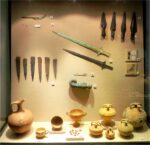 Resting on a slope between 140 and 170 feet below the surface, the wreck posed a significant challenge to excavate. Dives were limited to 20 minutes at a time during a three-month season. It took eleven consecutive diving campaigns from 1984 until 1994 for a total of 22,413 individual dives to explore the wreck and recover the cargo. The final tally was a jaw-dropping 17 tons of cargo, more than 18,000 artifacts from luxury finished goods for the elitest of the elite to stone tools to raw materials. It is one of the largest and wealthiest Bronze Age assemblages ever found and was sourced from 11 different civilizations including the Egyptian, Canaanite, Syrian, Nubian and Mycenaean cultures.
Resting on a slope between 140 and 170 feet below the surface, the wreck posed a significant challenge to excavate. Dives were limited to 20 minutes at a time during a three-month season. It took eleven consecutive diving campaigns from 1984 until 1994 for a total of 22,413 individual dives to explore the wreck and recover the cargo. The final tally was a jaw-dropping 17 tons of cargo, more than 18,000 artifacts from luxury finished goods for the elitest of the elite to stone tools to raw materials. It is one of the largest and wealthiest Bronze Age assemblages ever found and was sourced from 11 different civilizations including the Egyptian, Canaanite, Syrian, Nubian and Mycenaean cultures.
The bulk of the cargo consisted of copper and tin ingots in a ratio of 10:1, the exact proportion needed to smelt bronze, and an enormous quantity of it. This one ship was carrying enough copper and tin to make 5,000 swords.
A brief non-comprehensive summary of its contents:
- 10 tons of Cypriot copper in 354 slab ingots, 317 of them in the usual oxhide shape, 31 in a similar form but with only two protrusions on the long side (a shape unique to the Uluburun ship), 121 cake or bun-shaped ingots.
- One ton of tin in oxhide and bun ingots.
- 149 Canaanite amphorae filled with, among other things, many colors of glass beads, olives and terebinth resin (a fragrant oil burned as incense). This is the largest deposit of ancient terebinth ever found.
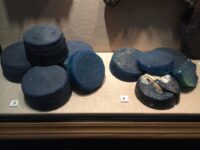 175 flat, circular glass ingots in cobalt blue, turquoise, amber and lavender (NB: before glass blowing was invented, glass was made by melting ingots and pouring the liquid glass into molds.)
175 flat, circular glass ingots in cobalt blue, turquoise, amber and lavender (NB: before glass blowing was invented, glass was made by melting ingots and pouring the liquid glass into molds.)
Raw ivory (elephant tusks, 14 hippopotamus teeth)- 18 African blackwood logs, so highly favored by the Egyptian elite for their furniture and wood accessory needs that their word for it “hbny” has come down to us 3,500 years later as the English “ebony.”
- Thousands of murex (sea snails from which the famed Tyrian purple dye was derived) shells.
- Large ceramic storage jars (pithoi), some packed with Cypriot pottery (oil lamps, jugs, bowls) made for export, others with fruits and other foodstuffs including olive oil, almonds, pine nuts, figs, grapes, pomegranates, olives and spices like coriander, nigella and safflower.
- One large gold chalice weighing 236 grams.
- A small gold scarab inscribed with the name of Nefertiti, queen consort of Pharaoh Ahkenaten. This is the only gold scarab of Nefertiti ever discovered.
The cargo recovered from Uluburun is part of the permanent collection of the Bodrum Museum of Underwater Archaeology where it is displayed in a reconstruction of the wreck. The assemblage is a unique and invaluable source of information about Late Bronze Age trade, industry, economics and technology, even how hulls of merchant ships were packed for their long voyages. Analyses of the Uluburun materials continue to this day.
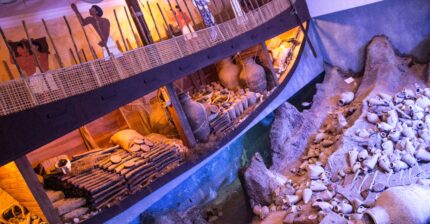
One of the questions researchers have long sought to answer is the source of the tin. Tin is scarce in the Mediterranean, and you can’t make bronze without it, so how were these giant Bronze Age empires and kingdoms supplying the high demand for so scarce a material? Up until recently, metallurgical analysis has not been able to pinpoint the source of Bronze Age tin. Thanks to decades of data collection on the composition of tin ore from different locations around the world, scientists were able to use isotope analysis to narrow down the origin of the Uluburun ingots: one third of it came from the Mušiston mine in Uzbekistan, two thirds from the Kestel mine in ancient Anatolia. Kestel was under the control of the Hittite Empire in the Late Bronze Age, a powerful centralized state that could afford and arrange major mining and transport operations. Uzbeki shepherds had no such resources.
[The research team’s] findings unveiled a shockingly complex supply chain that involved multiple steps to get the tin from the small mining community to the Mediterranean marketplace.
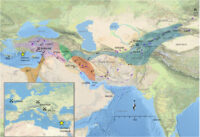 “It appears these local miners had access to vast international networks and—through overland trade and other forms of connectivity—were able to pass this all-important commodity all the way to the Mediterranean,” [Michael Frachetti, professor of archaeology in Arts & Sciences at Washington University in St. Louis] said.
“It appears these local miners had access to vast international networks and—through overland trade and other forms of connectivity—were able to pass this all-important commodity all the way to the Mediterranean,” [Michael Frachetti, professor of archaeology in Arts & Sciences at Washington University in St. Louis] said.
“It’s quite amazing to learn that a culturally diverse, multiregional and multivector system of trade underpinned Eurasian tin exchange during the Late Bronze Age.”
Adding to the mystique is the fact that the mining industry appears to have been run by small-scale local communities or free laborers who negotiated this marketplace outside of the control of kings, emperors or other political organizations, Frachetti said.
“To put it into perspective, this would be the trade equivalent of the entire United States sourcing its energy needs from small backyard oil rigs in central Kansas,” he said.
The study has been published in the journal Science Advances and can be read in its entirety here.
